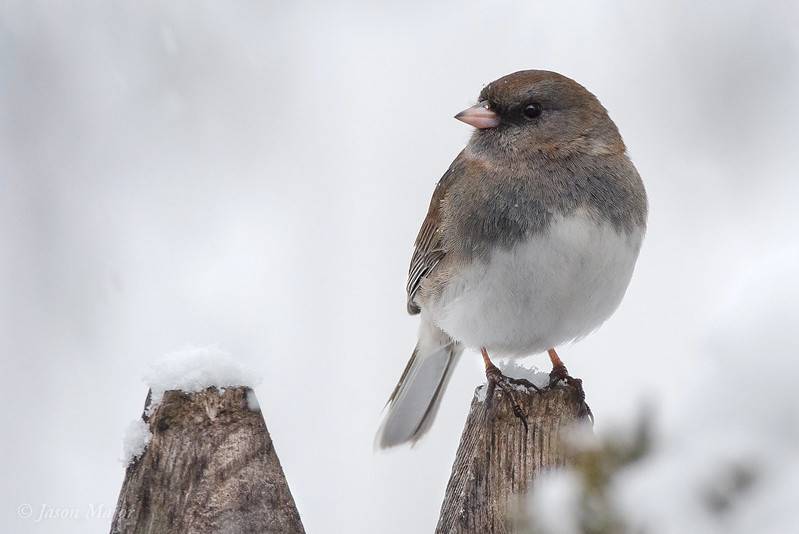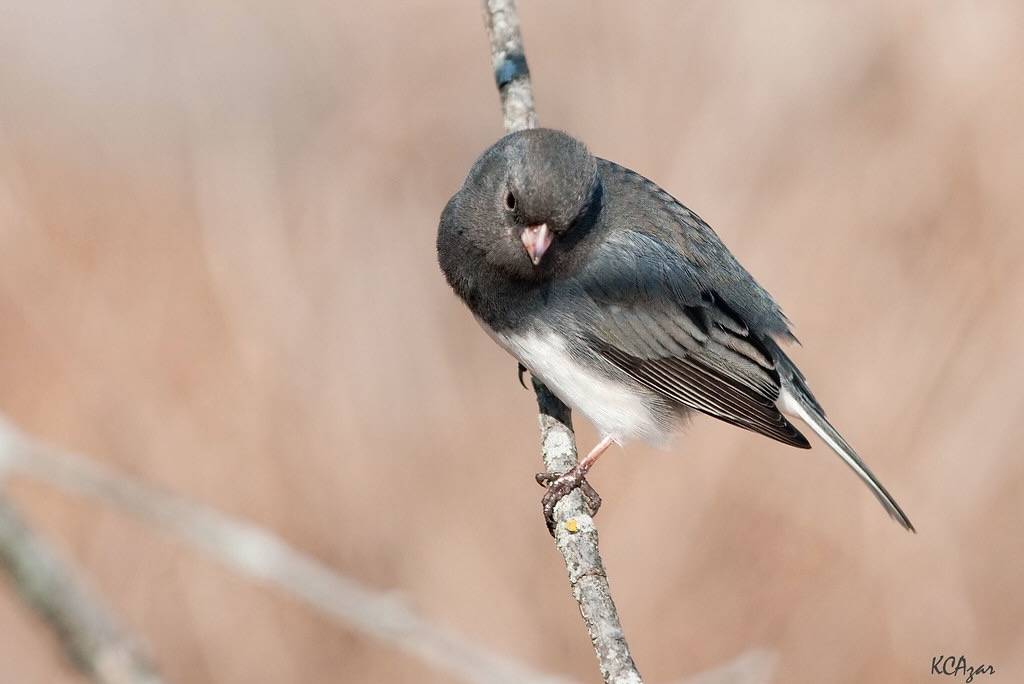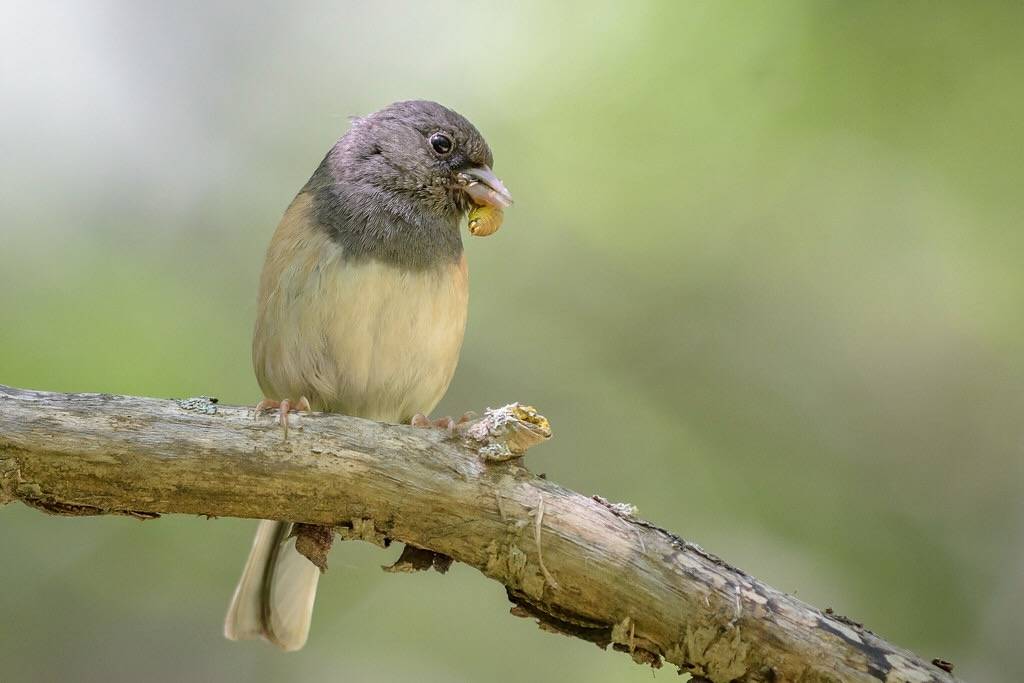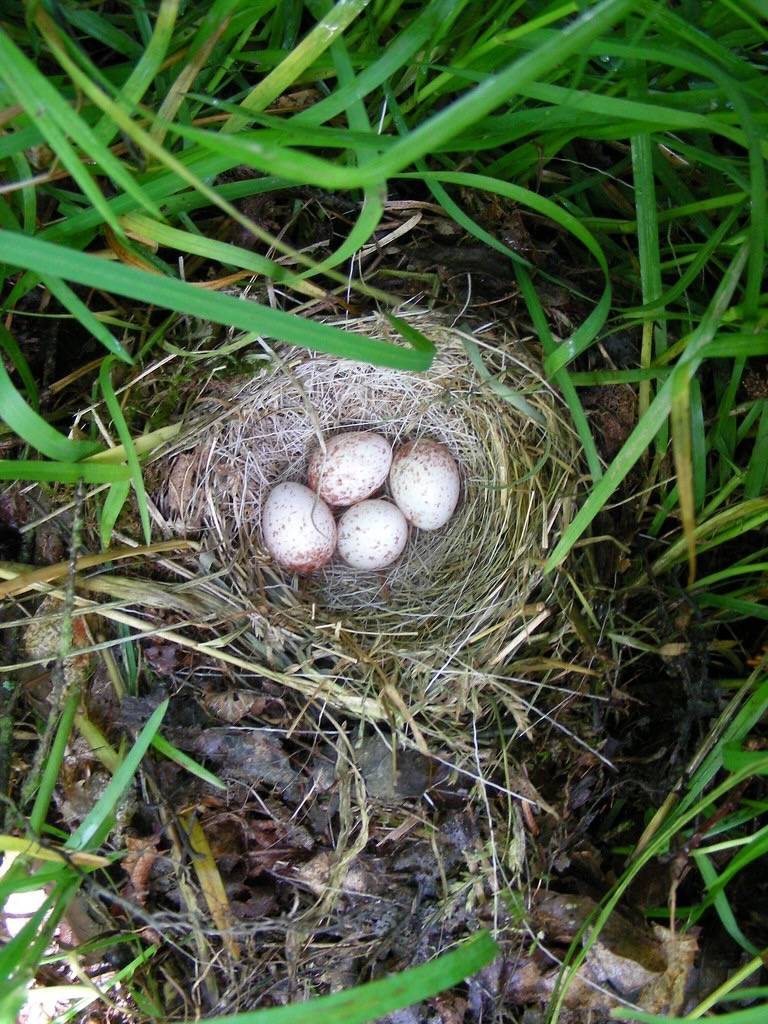Dark-eyed Junco
The slate-colored form of the Dark-eyed Junco is the one that visits Salter Grove during the colder months of the year. It has been most commonly seen along the border of trees and shrubs on South Lawn (near trail marker U6) as well as where Audubon Trail emerges from woodland into the open grassy area of Audubon Field (near trail marker A6).
The grayish-brown color of the adult plumage causes it to be inconspicuous as it forages for insects among the leafless lower branches of shrubs and trees. It only draws attention when it hops about on the forest floor or flutters its wings as it flies across the understory. The flashing of the white outer tail feathers reveals the presence of the otherwise camouflaged bird.
Although the Dark-eyed Junco belongs to the same bird family as sparrows, the adult plumage is uniformly colored rather than streaky. However, sparrow-like plumage does appear in nestlings and fledglings. The adults are often difficult to see as they forage in dense tangles of twigs and leaf litter.
It feeds on insects, such as beetles, moths, butterflies, caterpillars, ants, wasps, and flies, especially during the breeding season. However, 75% of its diet consists of the small seeds from plants like buckwheat, chickweed, lamb's quarters, and sorrel. At feeders, they prefer to feed on millet scattered on the ground rather than the larger sunflower seed.
It is a Nearctic species that is considered to be one of the most common birds in North America. Up to 15 subspecies are recognized. With a preference for coniferous or mixed forest as nesting habitat, its summer range reaches the Arctic. Its wintering grounds range across southern Canada and south to Mexico. Some populations are altitudinal migrants, with birds that breed at high altitude wintering at lower elevations rather than migrating south.




 9dec15.jpeg?w=350?blur=10)
 27oct17.jpeg?w=350?blur=10)
 16feb17.jpeg?w=350?blur=10)
 9jan19.jpeg?w=350?blur=10)
 10dec13.jpeg?w=350?blur=10)





 Im.jpeg?w=350?blur=10)
 Ad Fledglings 24may15.jpeg?w=350?blur=10)